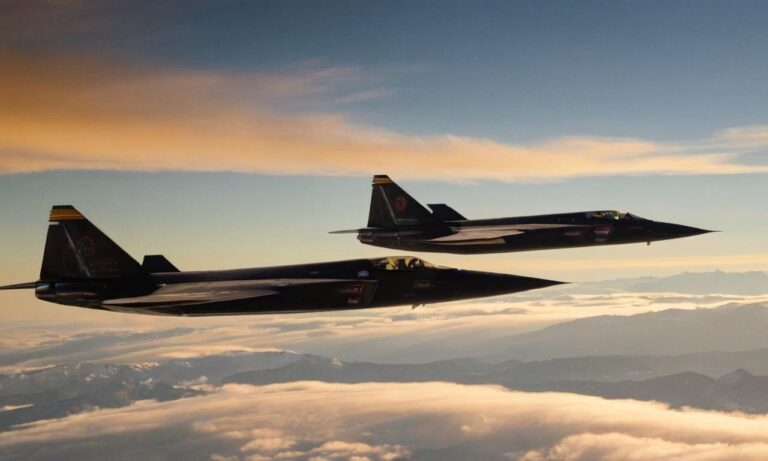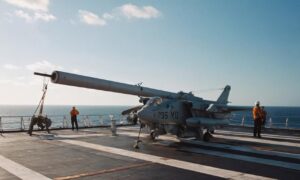In the realm of high-speed, high-altitude reconnaissance aircraft, the A-12 and SR-71 stand as iconic symbols of Cold War technological prowess. These two cutting-edge machines, developed by the United States during the mid-20th century, share similarities yet possess distinct features that set them apart. Let’s delve into the fascinating comparison between the A-12 aircraft and the SR-71.
The A-12: Precursor to the SR-71
The A-12, developed by the renowned Skunk Works division of Lockheed Martin, served as the precursor to the SR-71 Blackbird. Designed in the early 1960s, the A-12 was a single-seat, delta-winged aircraft specifically crafted for high-speed, high-altitude reconnaissance missions.
The SR-71 Blackbird: Cold War Legend
Building upon the success of the A-12, the SR-71 Blackbird became one of the most iconic aircraft of its era. Jointly developed by Lockheed and the Central Intelligence Agency (CIA), the SR-71 was an evolution of the A-12 design, featuring a two-seat cockpit and enhanced performance capabilities.
Key Differences in Design
While both aircraft share a similar overall design, certain key differences set them apart. The SR-71, with its two-seat configuration, allowed for a dedicated reconnaissance systems officer (RSO) in the cockpit. This collaborative setup enhanced the effectiveness of the SR-71’s reconnaissance capabilities.
Speed and Altitude: A Race to the Edge
One of the defining characteristics of both aircraft is their remarkable speed and altitude capabilities. The A-12 could reach speeds exceeding Mach 3, while the SR-71 pushed the envelope even further, reaching speeds in excess of Mach 3.5. These staggering velocities allowed them to operate at altitudes where few adversaries could intercept or engage them.
Operational History and Legacy
The A-12 and SR-71 played vital roles during the Cold War, providing crucial intelligence gathering for the United States. The A-12 operated covertly over hostile territories, while the SR-71, with its improved capabilities, continued its service until its retirement in the late 1990s. Both aircraft left an indelible mark on aviation history.
As we explore the dynamic comparison between the A-12 and SR-71, it becomes clear that these aircraft represent a pinnacle in aviation engineering. Each with its unique features, they contributed significantly to the United States’ reconnaissance capabilities during a critical period in history. The legacy of the A-12 and SR-71 continues to captivate aviation enthusiasts and remains a testament to human ingenuity and technological advancement.
Stealth Technology in the A-12
One notable aspect of the A-12’s design is its pioneering use of stealth technology. While not as pronounced as in later aircraft, the A-12 incorporated innovative features to reduce its radar cross-section, enhancing its ability to operate covertly.
Advancements in Spy Satellites
During the same era, advancements in spy satellite technology played a pivotal role in intelligence gathering. The development of high-resolution imaging satellites provided an alternative and complementary means to the capabilities offered by the A-12 and SR-71, expanding the scope of reconnaissance missions.
Frequently Asked Questions
Curious about the specifics of these remarkable aircraft? Here are some frequently asked questions to shed light on their intriguing features and historical significance:
| Question | Answer |
|---|---|
| 1. What was the maximum speed of the SR-71? | The SR-71 Blackbird could reach speeds in excess of Mach 3.5. |
| 2. How did the A-12 contribute to the development of the SR-71? | The A-12 served as the precursor to the SR-71, influencing its design and capabilities. |
| 3. What role did the SR-71 play during the Cold War? | The SR-71 played a crucial role in reconnaissance, gathering intelligence over hostile territories. |
| 4. When were these aircraft retired? | The SR-71 was retired in the late 1990s, while the A-12 had a shorter operational span. |
Technological Innovation Beyond the Cold War
The legacy of the A-12 and SR-71 extends beyond the Cold War era. The technological innovations developed for these aircraft laid the groundwork for future generations of high-speed and high-altitude aerospace platforms, influencing the design of contemporary reconnaissance and strategic aircraft.






